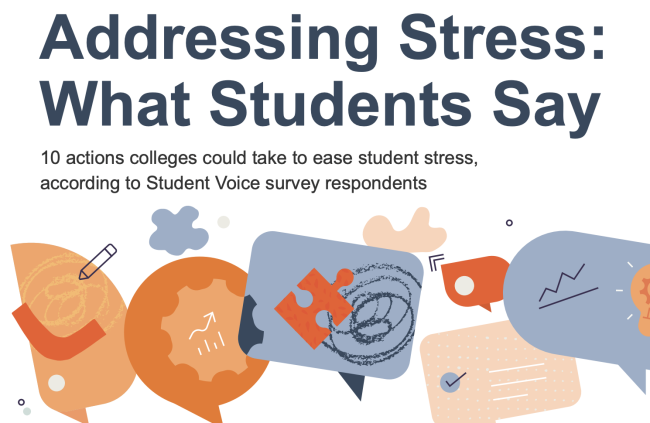You have /5 articles left.
Sign up for a free account or log in.

Student Voice respondents share their ideas for easing student stress on their campuses.
Dr. After 123/DigitalVision Vectors/Getty Images
Sragvi Pattanaik, a junior at the University of Maryland at College Park, knows something about dealing with stress. She’s majoring in neurobiology and psychology and hopes to become a doctor—no easy feat. She’s an on-campus crisis counselor who’s passionate about student wellness, both physical and emotional, and she also uses her TikTok to promote mental health awareness. So what would Pattanaik do first to reduce students’ stress if she were responsible for collegiate health and wellness? Ensure access to one-on-one counseling services at no cost to students.
“Free therapy on campus allows for students to establish a relationship with a mental health professional that can emotionally support them on a semesterly basis,” Pattanaik explains. “University-covered therapy also motivates more students to learn better coping mechanisms to manage high-stress periods in school.”
What other ideas do students have for reducing stress on their campuses? Inside Higher Ed and College Pulse asked respondents to the spring Student Voice survey on health and wellness what they’d do first to help students in this way, were they responsible for health and wellness at their institutions. Like Pattanaik, many of the 3,000 survey respondents across 158 two- and four-year institutions suggest bolstering and promoting mental health services. (Just three in 10 respondents say easing stress is only the student’s responsibility.)
Other findings from the survey certainly reveal a link between students’ stress levels and their mental health—as well as gaps in accessing mental health services.
Beyond increasing access to mental health services, student suggestions for reducing stress range from relatively simple interventions (therapy dog visits and free food) to more fundamental changes, such as offering students more financial assistance.
Read more about students’ ideas, as well as findings from the Student Voice survey, in the infographic below.
Want to print and share this infographic? Request a free letter-size PDF here.





